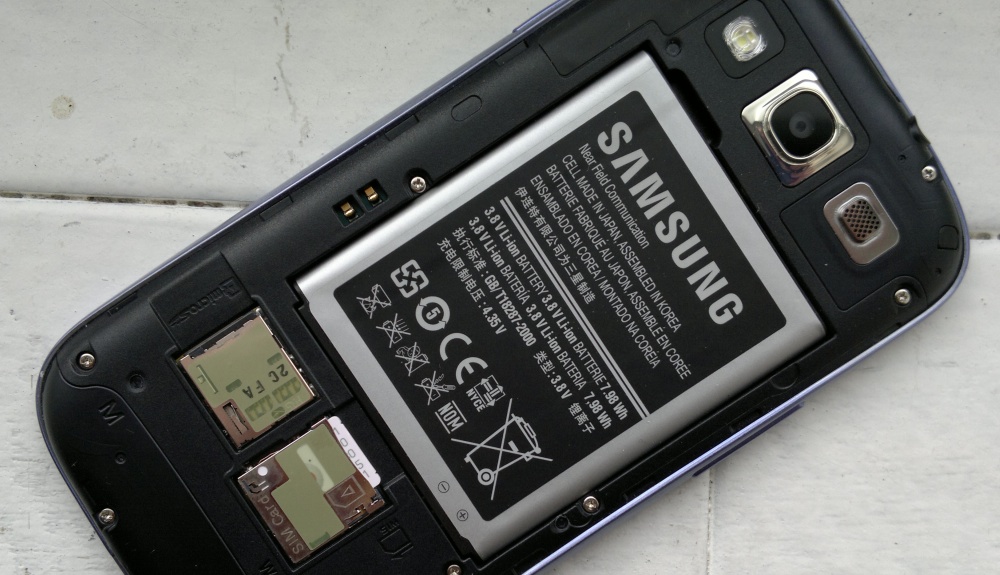
The obvious question is: why these four devices? Rather than simply compare the biggest selling, or the best regarded, or the highest specified four smartphones, I wanted a complete cross-section, the best that each platform/ecosystem had to offer. Besides which, two devices from the same ecosystem would likely be just far too similar, whereas the four below are very different in many ways....
The Nokia 808 PureView is, unquestionably, the best Symbian smartphone made - the iPhone 5 is the best iPhone made, etc. The Lumia 920 just pips the HTC 8X and the Samsung ATIV S for the honour of representing Windows Phone 8 by virtue of the next-gen camera, though admittedly there wasn't much in it. While the Galaxy S III just gets the Android nod by virtue of not only being just about the highest specified, it's also the most flexible and has sold by the tens of millions, so it's not just me who rates it(!)
As usual, the table is part reference, part subjective opinion. And where obviously appropriate (some criteria are 100% subjective!), I've allocated a row winner (or winners, plural, where I can't split two devices), in green.
Layout note: This being a somewhat large table, you may need to view it on a laptop or desktop screen, in order to view the full tabular version. An image based version of the table (1.38MB) is available here.
| Nokia 808 PureView | Apple iPhone 5 | Nokia Lumia 920 | Samsung Galaxy S III | |
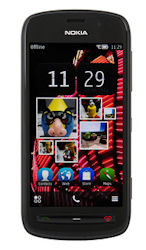 |
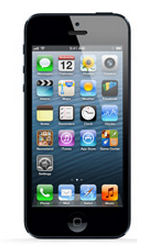 |
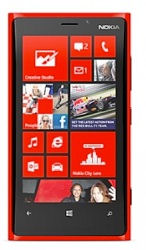 |
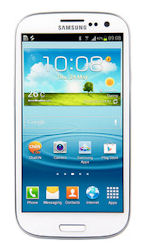 |
|
| First sold | May 2012 | September 2012 | November 2012 | May 2012 |
| OS | Nokia Belle FP1 | iOS 6 | Windows Phone 8 | Android 4.0.4 plus TouchWiz and other Samsung extensions |
| Form factor, materials | Solid plastic body, full-face Gorilla glass capacitive touchscreen, pretty robust in the months I've used it, still looks like new. Weight is 170g | Aluminium frame and back, glass front and rear inserts, early reports are that it feels a million dollars but that the painted aluminium scratches very easily - not sure what Apple can do about this. Weight is 112g | Polycarbonate shell, convex Gorilla Glass front, should be fairly robust, with the shell colour baked into the material, etc. Weight is 185g | Larger but lighter, essentially two-handed form, plastic body, full face Gorilla glass, not terribly robust in my experience, feel in the hand isn't of a premium device. Weight is 133g |
| Dimensions | 124 x 60 x 14 mm | 124 x 59 x 8 mm | 130 x 71 x 11 mm | 137 x 71 x 9 mm |
| Connectivity | Pentaband 3G, Wi-Fi b/g/n, Bluetooth 3.0, 'USB on the go' (to USB disks/accessories), wifi tethering built-in via Joikuspot Light, but requires an app upgrade to get full functionality, Near Field Communications (NFC) | Quad band 3G plus LTE (misc bands), Wi-Fi b/g/n, Bluetooth 4.0, integral wifi tethering, Lightning port (proprietary, to various accessories) | Quad band 3G, pentaband LTE, Wi-Fi b/g/n, Bluetooth 4.0 (by the time it's available), integral wifi tethering, NFC | Quad band 3G, Wi-Fi b/g/n, Bluetooth 4.0, integral wifi tethering without needing third party software, USB on the go, NFC |
| Input mechanisms | Adequate virtual qwerty landscape keyboard with multitouch support under Belle FP2 update that's imminent, with writing aids, plus qwerty or numeric 'T9' input in portrait mode. Compatible with most Bluetooth and USB keyboards. | Excellent predictive virtual multitouch keyboard in portrait and landscape mode. Some voice input/dictation possible. | Excellent predictive virtual multitouch keyboard in portrait and landscape mode. | Pretty good multi-touch virtual qwerty keyboard in both portrait and landscape modes (where appropriate), with writing aids. Compatible with most Bluetooth keyboards. S-voice (based on Vlingo) allows some voice recognition and control. |
| Display | 4.0" (360 x 640 pixels) AMOLED with ClearBlack Display polarisers, true RGB pixels, readable in bright sunlight | 4.0" (640 x 1136 pixels) IPS LCD display, true RGB, passable outdoors in sunlight | 4.5" (768 x 1280 pixels) IPS LCD display with ClearBlack Display polarisers, true RGB, excellent in sunlight | 4.8" (720 x 1280 pixels) Super AMOLED, pentile pixel layout (some argue that this effectively halves the 'real' resolution), just about readable in bright sunlight |
| Interface | (Symbian) Nokia Belle FP1 (and soon FP2), kinetic scrolling everywhere, multi-touch where needed, six homescreens of live widgets, whole interface works in portrait or landscape mode. | iOS 6, kinetic scrolling and multitouch everywhere, static grids of application icons/folders in portrait mode only, many applications do also work in landscape though. | Windows Phone 8, kinetic swiping and multitouch everywhere that's needed, portrait mode tile layout homescreen plus linear application list. Some applications support landscape mode. | Android 4, customised with TouchWiz additions, kinetic and multi-touch, of course. Seven homescreens of live, often interactive widgets. Most applications work in landscape mode, but homescreen and app menu is resolutely portrait only. S-Voice interface with customised 'wake up' audio control |
| Speed | Good, 1.3GHz ARM 11 with 512MB RAM and a graphics processor to help out with effects, transitions and multimedia, plus a dedicated PureView camera GPU. Full multitasking with no limits, everything can run at the same time in the background if needed. | Excellent, dual core (up to) 1.2 GHz custom A6 processor/co-processor, class-leading performance in web page rendering and in benchmarks. Limited multitasking (system apps, plus some background threads allowed for third party apps). | Excellent, dual core 1.5GHz Krait processor, very responsive UI all round and super rendering speed. Multitasking isn't full, but as with iOS, enough background threads are allowed that the user probably won't notice any issue. | Generally very good, with a quad-core 1.4GHz Exynos processor, plus GPU. The processing power has been demonstrated by playing back smooth 1080p Flash video in web pages - amazing, in a phone. As with Symbian, there's full, no holds multitasking. |
| Memory capacity (storage) and flexibility |
Up to 512MB of C: (system) disk, plus 16GB mass memory and flexible microSD expansion, e.g. adding an extra 32GB. Apps can be installed on any disk. Plugging in the phone to any desktop computer allows mass memory and microSD to be mounted and treated like any other disk. Plus generic USB disk support via 'USB on the go', adding up to 128GB extra. |
16/32/64GB integral storage, non-expandable, no mountable functions, data and content is transferred by iTunes on a desktop or over the air directly from Apple's servers. Some flexible USB expansion options via Lightning port and assorted adapter cables. | 32GB internal storage, non-expandable, no mountable functions, data and content is mainly transferred by Zune Desktop (and whatever companion application follows it) over microUSB. | 16/32/64GB (depending on variant) of integral storage (MTP-mountable on a desktop), plus microSD expansion, quoted up to 64GB. Plus generic USB disk support via 'USB on the go', adding up to 128GB extra. |
| Camera (stills) |
Superlative 38 megapixel stills, though usually running in 5mp 'PureView' mode, offering zero digital noise with hardware-driven oversampling and 'perfect' pixels with lossless 3x digital zoom. Huge 1/1.2" sensor and Carl Zeiss optics. Exposed camera glass. Proper shutter button. Genuine Xenon flash and tuned camera hardware make for foolproof evening/social shots. |
Excellent 8 megapixel stills from a BSI 1/3.2" sensor, a limited amount of software-driven oversampling and LED flash. No camera button, though one of the volume buttons can be used if the phone is held 'upside down', with the camera lens at the bottom right. | Excellent 8 megapixel stills from a BSI 1/3" sensor with 'PureView phase 2' optical stabilisation on the whole camera assembly, adjusting at 500 times a second. Advanced image processor and LED flash. Dedicated camera button and a variety of camera 'extras' built-in. |
Good 8 megapixel photos, 1/3.2" sensor, LED flash. Results will be similar to those from the Galaxy S II with near identical camera hardware - see my SGS2/N8 photo comparisons. A variety of extra camera modes in software. No camera shutter button. |
| Camera (video) | 1080p video capture, with intelligent (non-lossy) 3x digital zoom, thanks to the 41 megapixel raw sensor; audio capture in stereo and with pro-quality digital mikes and 'RichRecording' software and electronics, capable of handling a very wide volume range. | Good 1080p capture, with accelerometer-based software stabilisation and good stereo audio. | Excellent 1080p capture with the same optical stabilisation working to eliminate camcorder hand shake. 'RichRecording' included, but only in mono. | Full 1080p capture, with continuous auto-focus good audio capture at normal volumes, in stereo. |
| GPS and navigation | Good GPS, backed up by Nokia Wi-fi location, with Nokia Maps 3.9 worldwide free sat-nav. Maps can be fully pre-loaded by continent, country or area. | Good GPS and Wi-fi positioning options, though Apple Maps software is still very immature, with many errors and omissions, as has been widely documented. | Good GPS, backed up by Nokia Wi-fi location, with Nokia Drive worldwide free sat-nav. Maps can be fully pre-loaded by continent, country or area. | Good GPS, with Google Maps Navigation and (somewhat robotic) voice guidance. Maps can now be pre-cached for small areas, but the system is limited and these caches aren't used for routing at all. |
| Audio out | Loud, high quality mono speaker, 3.5mm jack, A2DP, FM transmitter to car radio, plus Dolby Digital Surround Sound (through HDMI port), DLNA via built-in Nokia Play To system. | Loud stereo speakers, 3.5mm jack, A2DP, DLNA/AirPlay to compatible equipment. | (Assuming the same speaker as the Lumia 800 and 900) Average mono speaker, average quality, A2DP, 3.5mm jack, DLNA. | Average mono speaker, 3.5mm jack, A2DP, DLNA. |
| Multimedia playback | Video playback is terrific on the AMOLED screen, with a wide range of codecs supported from local or remote files. YouTube playback in high quality requires a third party download (e.g. CuteTube), or 360p via the mobile YouTube web site. | Video playback excellent on the new 16:9 iPhone 5 screen, limited by iTunes transcoder on the desktop, though plenty of add-on applications available for handling streaming video sites (e.g. YouTube) | Video playback should be great on the large CBD display, though somewhat limited by Windows-based transcoder and desktop sync, no user accessible file system or way of side loading standard video files. Many, many streaming video applications available for the platform though. | Video playback is excellent on the big AMOLED HD screen, a wide range of codecs supported from local or remote files. Excellent HQ YouTube support means that quality streamed video is never far away, too, on that 720p screen, bandwidth permitting. |
| Web browsing | Symbian Web, functional without ever really impressing, though it's faster on the 808 than on any previous Symbian handset. Multiple windows possible. Many people replace Web with Opera Mini or Opera Mobile. | Very fast web page rendering and zooming/panning and paragraph reflow. Multiple windows possible. | Very high resolution and a super-fast browser make for an excellent browsing experience, zooming, panning, reflow all possible. Multiple windows possible. | Stunning rendering speed on a stunning display. The Android browser on the SGS III is very good, with text reflow, etc. At 720p resolution, many sites also don't even need zooming or panning if your eyes are good enough. Multiple windows possible. Google Chrome also now available for download, with even greater speed, streamlined interface and HTML5 compatibility. |
| All purpose Mail client provides 'push' facilities for (one) Mail for Exchange (account), Hotmail, Gmail, Yahoo! mail and many others - works well on the whole but some slight performance annoyances when particularly 'rich' emails come in. | A strong email application, with support for most of Gmail's features in particular. | As with the iPhone, a strong built-in generic email application with support for most Gmail and Outlook.com (Hotmail) features, and multiple (e.g.) Mail for Exchange accounts. | The odd pairing of Gmail and a generic email client persists, as is usual for Android, but it should all work well and at very good speed here, bandwidth permitting. | |
| Other application highlights out of the box | Microsoft Office Mobile editing suite/cloud integration, Dictionary, Zip manager, Photo editor, Video editor, Nokia Social Networking (Twitter and Facebook) | Stocks, Weather, Twitter and Facebook, Photos (with editing) | Office Mobile, Nokia CityLens, standard Windows Phone social features | Full Polaris Office editing suite, plus Dropbox, various digital content hubs/stores, Samsung-specific add-ons and the usual Android core applications. |
| Application store and ecosystem | Nokia Store client, hundreds* of high quality native Symbian applications are compatible. There's an automatic update system, supporting multiple apps, but installs are somewhat intrusive and slow where the Qt Smart Installer is involved. | Apple App Store client, many thousands* of high quality applications. Installation is generally quick and multiple updates can be applied in one 'manual' operation. | The Windows Phone Store is pretty well stocked these days, thousands* of high quality applications, with only a few high profile omissions. Moreover, multitasking limitations for apps under Windows Phone 7.5 are now largely a thing of the past. App installs are of average speed and happen one at a time, but you can queue them up with one tap to happen in the background. | Google Play (the new name for the Android Market...!), and access to many thousands* of high quality native (based on Java) applications. Applications can be automatically or manually updated. |
| Battery capacity and flexibility/longevity | 1400mAh, replaceable when needed, microUSB charging, casual use should last 2 days. | 1440mAh, sealed in, Lightning (proprietary) charging, adapters for sale for other charging inputs, casual use should last 2 days. | 2000mAh, sealed in, microUSB charging, casual use should last 2 days | 2100 mAh, replaceable when needed, microUSB charging, casual use should last 2 days. |
| Ongoing firmware support and OS updates | The grand-daddy in terms of OS among this bunch, twelve year old Symbian's long term prospects are of course time-limited now. Belle Feature Pack 2 is imminent, bringing quite a facelift. After that, support and minor upgrades will continue at some level though, for another two years. OS modules and components can be upgraded, over the air, as-and-when using the 'Sw update tool' in the device, or via Nokia Suite under Windows. | iOS is getting on a bit now (five years), but Apple has shown great commitment to updates, even for older hardware, so it's a fair bet that the iPhone 5 will get iOS 8 in 2014, for example! Updates are now over-the-air, too, or via iTunes. | Microsoft have deep pockets, so should ensure Windows Phone 8 stays fully resourced in terms of updates, plus Nokia have a good track record too, with many built-in applications unique to their marque. Updates should be available over the air or via desktop tool. | Prospects reasonable, this is Samsung's flagship for 2012, though any core Android updates will take many months to appear - Jelly Bean is imminent, since the OS has to have TouchWiz applied and then tested as such. Samsung's track record for long term updates is somewhat patchy. Updates are available over the air or via Kies desktop suite. |
 |
 |
 |
 |
|
| Number of 'greens' above | 6 | 6 | 8 | 7 |
* yes, yes, overall numbers in each store are much higher, but I'm estimating the number of genuine high quality applications/games. Not novelties or copycats or junk.
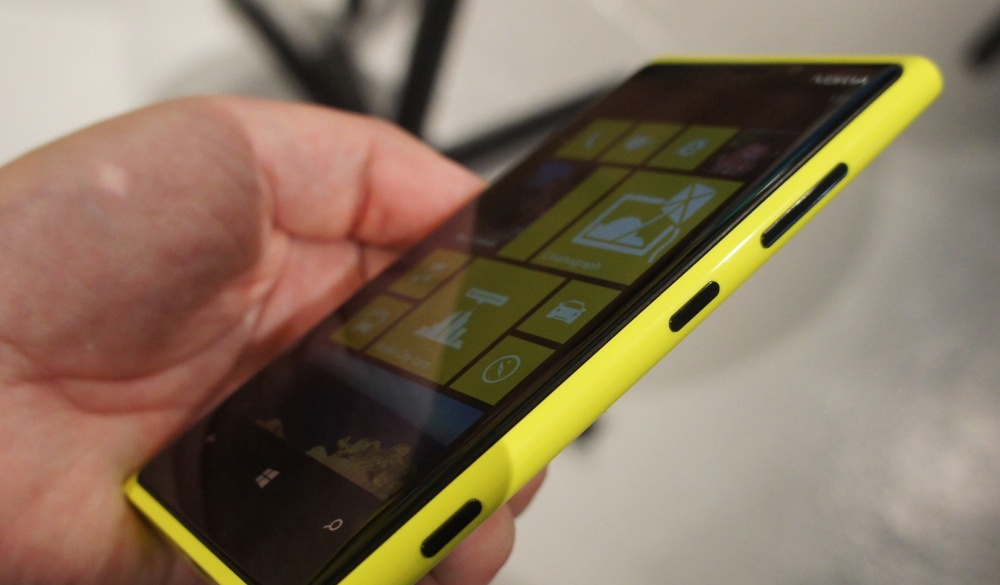
As ever, the 'greens' scoring isn't always reliable, but it does hopefully help when trying to compare top devices against each other. The scoring's fairly even, with the Nokia 808 PureView and Apple iPhone 5 taking equal honours (you may remember my recent article contrasting the two) for 3rd place - fairly different devices aimed at different types of user, I still maintain.
In second place, the massive-selling Samsung Galaxy S III, really a great all-rounder that would have won out except for the winner here, the yet-to-be-publicly-available Nokia Lumia 920. I would probably have excluded the 920 on this ground, except that 1) Rafe's had hands-on time, so it's not a totally unknown quantity, plus 2) the sheer specifications (screen, camera) of the Lumia 920 have a lot of people excited on both the 'All About' sites - it's the device everyone wants to see comparisons made for.
The fact that I can draw out four flagships from four different ecosystems and have them all relatively competitive with each other is a very healthy sign for the smartphone world. Yes, the Symbian side of things is waning, but it's hard to split the other three platforms. Windows Phone 8 is by far the newest, but also the least well established (the more limited WP7 not being a runaway success) and is perhaps the controversial inclusion here - making it all the more interesting that the Lumia 920 ended up (just) winning out!
Comments welcome as usual. Which one do you think should have won?
Steve Litchfield, All About Symbian and All About Windows Phone, 24th September 2012
